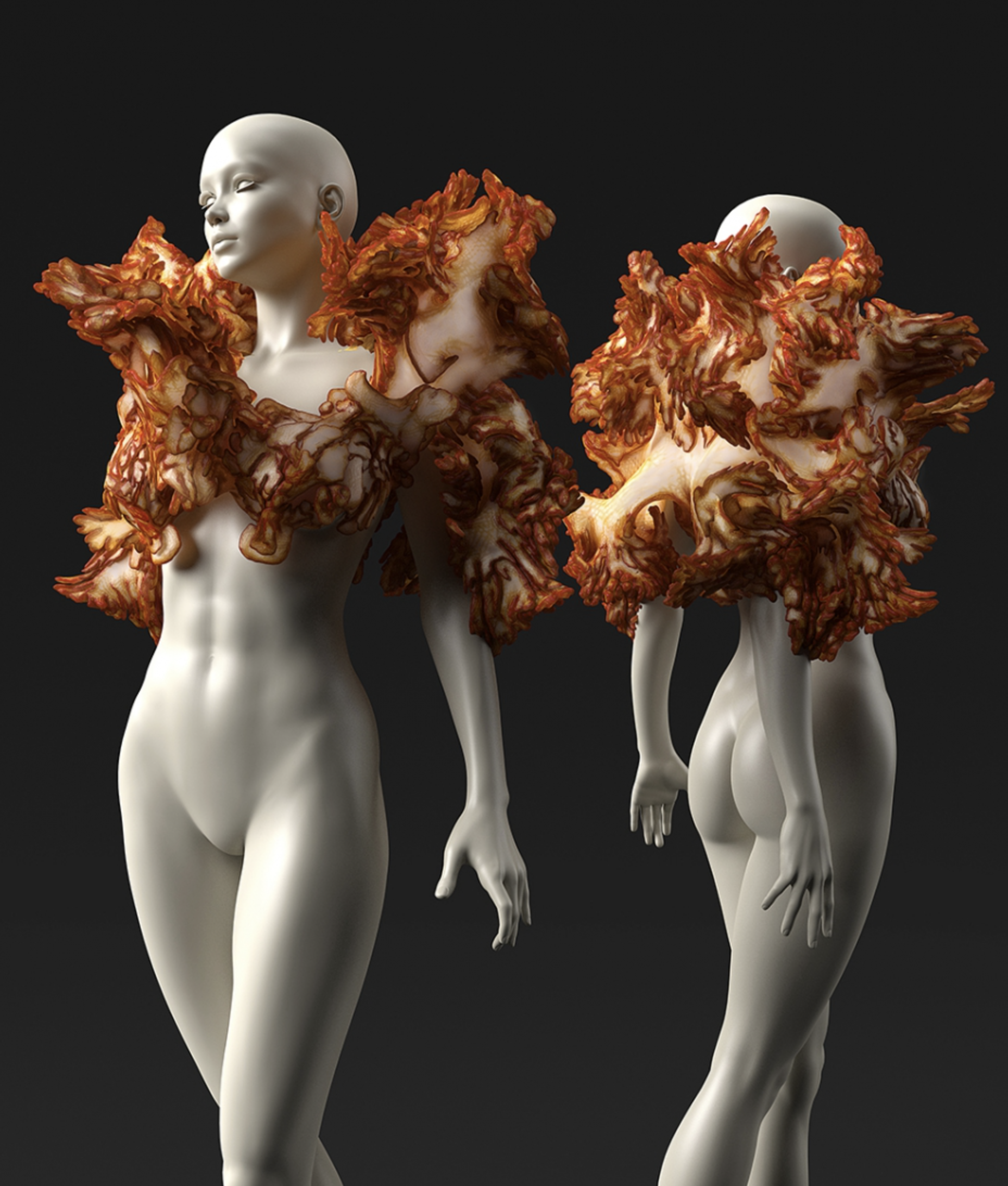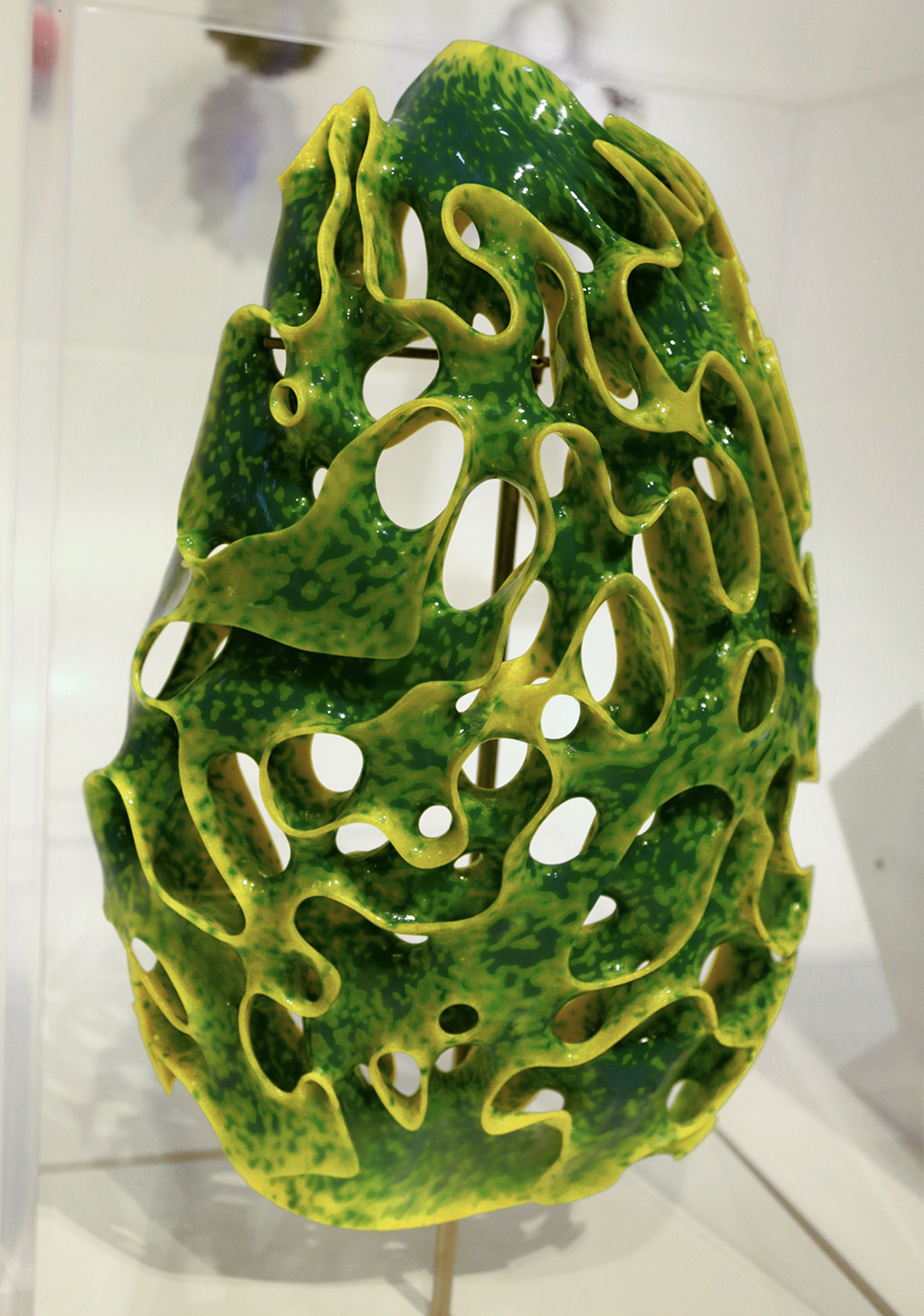NERI OXMAN
Organic Design
of her time, her work has been said to mark a before and after in the way of understanding the world, architecture and design. But in order to appreciate how she has managed to combine design, biology, computing and materials engineering in such a prodigious way, we must go back to her beginnings.
Oxman was born in Haifa, Israel. The daughter of Robert and Rivka, both architects, she spent hours in her grandmother’s garden and at her parents’ studio. As a result of this, both worlds – the natural and the man-made – merged on the same plane, planting a seed that would awaken years later, thanks to her privileged mind.
She enlisted in the Israeli Air Force to serve in the military, reaching the rank of first lieutenant. Afterwards, she moved to Hebrew University’s Hadassah Medical School in Jerusalem to study medicine. Two years were enough for Oxman to discover that in fact architecture was her true vocation, so she dropped out in order to enrol at the Technion in her native country, to then continue her education in London and Boston. It was in Boston that she joined the doctoral programme in architecture at MIT. Even then, her goal was clear: to delve deeper into material-sensitive design, which led her to further her career and become an associate professor at MIT.
Material Ecology
Neri Oxman has coined the term «Material Ecology» to define her work, which places materials at the centre of her research. Her designs, inspired by nature and biology, have taken her projects to the most prestigious museums around the world, from the American MoMA to the Centre Pompidou, as well as the Museum of Applied Arts in Vienna, the San Francisco Museum of Modern Art and the Boston Museum of Science.
Experts such as Andrew Bolton have described her works as «otherworldly – defined by neither time nor place». In this context, Oxman describes the universe as a gigantic organism full of colour gradients and physical properties rather than defined boundaries. She therefore proposes the use of biological forms and textures, and includes living elements in her manufacturing processes, such as the glowing bacteria in Mushtari.
In 2013, Oxman conducted a pioneering research project, using more than 6,500 free-ranging silkworms to build a nylon-framed dome as part of the Silk Pavilion project. A year later, a water-based digital fabrication platform was included in the Ocean Pavilion, where structures were built from soluble organic fibres. And just a few months later, in the Synthetic Apiary, a study was carried out on the behaviour of bees, which unwittingly served as a source of inspiration.
Sciences in correlation
For Oxman, there should be a permanent correlation between science, engineering, design and art, so that it is unclear where one discipline ends and the other begins. With this premise, she has proposed a more significant role for architecture in society, on a par with science and engineering.
Many of Oxman’s projects use 3D printing, and she is credited with developing the first equipment to produce optically transparent glass. Her research into 3D printed clothing has been used in shows and on catwalks. The techniques are so advanced that MoMA curator Paola Antonelli has said of her, «She is a person ahead of her time, not of her time», while editor and critic Bruce Sterling has commented that her work is «shatteringly different from anything before».
In her personal life, Neri Oxman was married to Argentinian composer Osvaldo Golijov, and was briefly linked to actor Brad Pitt, who is passionate about architecture, design and art. She is currently married to the American investor, Bill Ackman, with whom she has a daughter, Raika.
Oxman, in her capacity as director of the Mediated Matter Group at the MIT Media Lab, continues to focus on designs that will not be implemented this year. They will not even be launched this decade. Experts predict that the projects on which the architect is working will probably reach their maximum expression in 50 years’ time.
DESIGN STUDIO:
Av. Bulevar Príncipe Alfonso de Hohenlohe, Real, 20, 29602 Marbella, Málaga












Dejar un comentario
¿Quieres unirte a la conversación?Siéntete libre de contribuir!